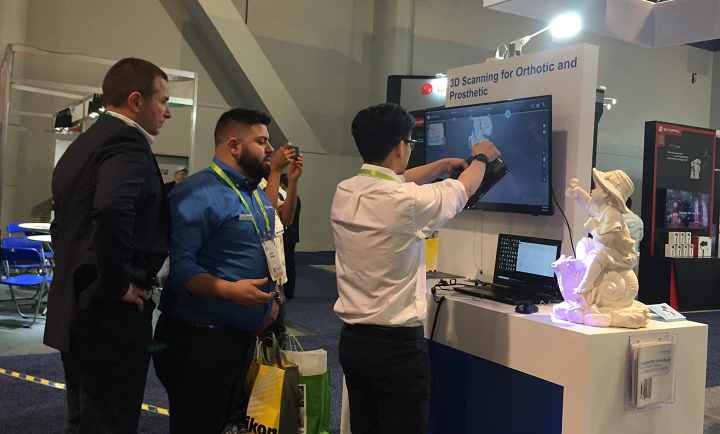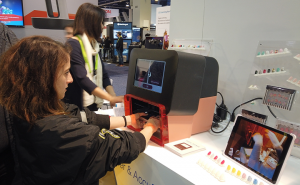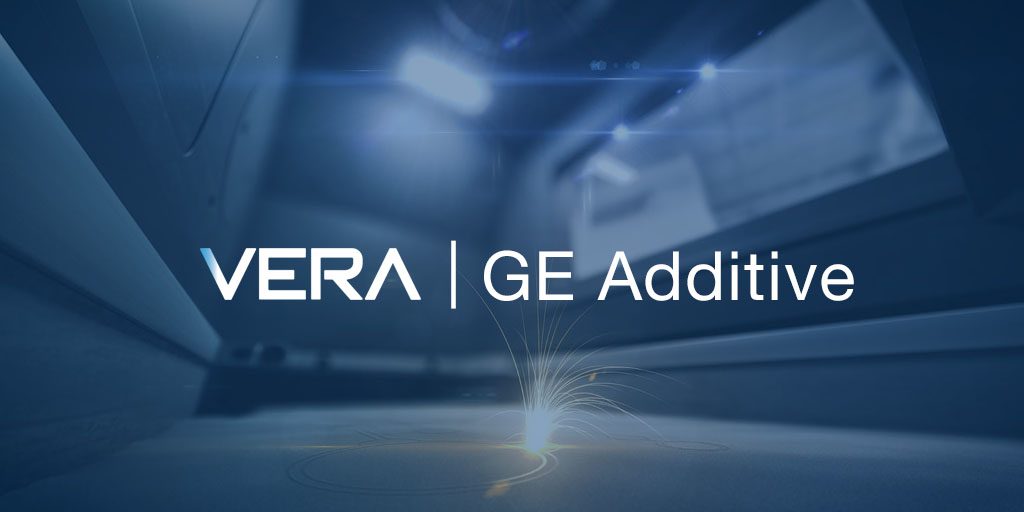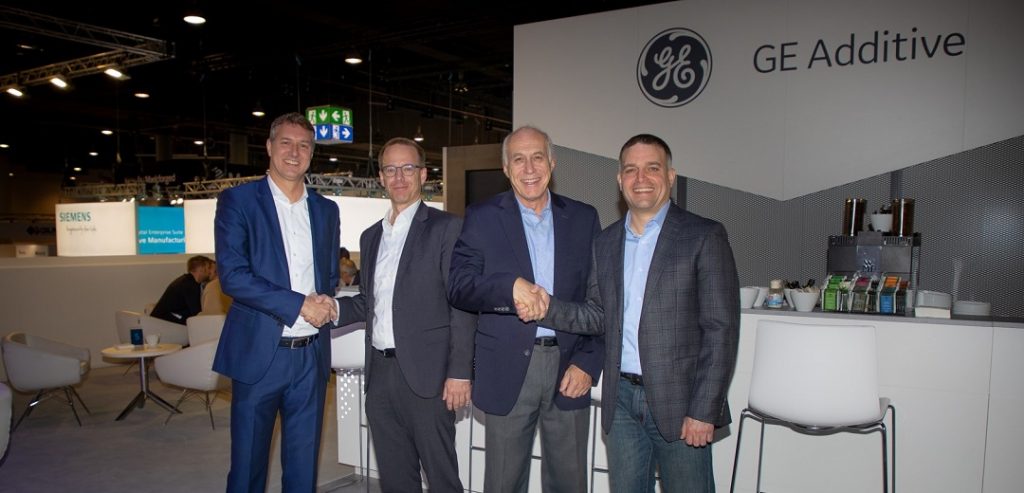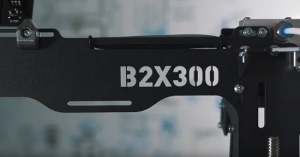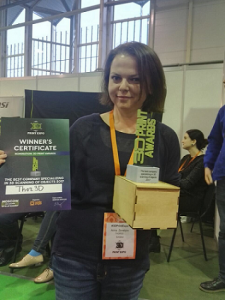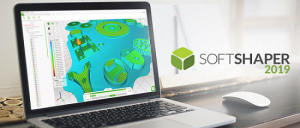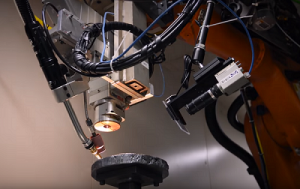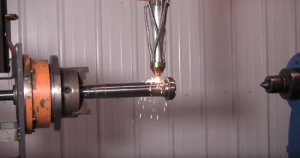SHINING 3D was honored to have the leading industry media 3D2013.com to interview Leo Liang, Go Say Tiam of Siemens PLM Software and Li Tao of SHINING 3D in Hangzhou, to talk about the partnership between their respective organizations and plans for the future.
Leo Liang,
Senior Vice President and Managing Director of Siemens PLM Software for Greater China
Go Say Tiam,
Global Vice President of Siemens PLM Software for Mid-Market Portfolio
Li Tao,
CEO of SHINING 3D
Integration of digitizing solutions and taking advantage of additive manufacturing technology
As a global leader in industrial technology and industrial software, Siemens PLM Software is committed to promoting the development of “Industry 4.0” worldwide, providing enterprises with digitizing solutions to achieve transformation with higher productivity, higher efficiency, shorter time for product launch and greater flexibility. Leo Liang of Siemens PLM Software believes that digital manufacturing is changing people’s lives. Siemens PLM Software provides complete solutions for many well-known companies including mobile phones, ships, automobiles, aviation, etc. From design, simulation to seamless manufacturing, it improves the overall efficiency of workflow.
While additive manufacturing technology is an indispensable part of digital manufacturing, both in terms of Siemens’ own industrial product development and successful user experience of partner companies, which has been widely applied in industrial, medical, automotive and other fields. Compared with the current mainstream production methods, additive manufacturing technology has significant subversive advantages in terms of achieving the lightweight design of products, direct production of complex structures, improving production efficiency and saving cost.
Although the application of additive manufacturing is very common in high-end manufacturing and medical industries, this concept is still relatively unfamiliar to many SMEs. It is cutting-edge technology which cannot be reached. To eliminate this misunderstanding and to promote the large-scale application of additive manufacturing technology, it is urgent for more enterprises to realize the application value and necessity of additive manufacturing today.
“Next Generation Design” promoting the popularization of 3D modeling and design

Although there are many doubts toward additive manufacturing in the market – believing that it has many limitations and drawbacks when compared with other production processes. Li Tao, CEO of SHINING 3D, thinks that such a comparison is meaningless, “additive manufacturing technology actually complements the missing link in the current mainstream production process,“ he adds.
SHINING 3D currently has more than a dozen 3D printing centers across China, serving almost 20,000 companies. Customers benefit from high performance, high efficiency and low scrap thanks to additive manufacturing technology. It is undeniable that most enterprises have begun to use additive manufacturing technology to design and speed up development. However, in most cases, these 3D data for additive manufacturing is designed for other post-processing methods. It will be hard for the additive manufacturing market to grow faster if its application is limited to only this.
In fact, large-scale application of additive manufacturing is closely related to design. Many high-performance products, such as high-performance components of turbine engines and some lightweight and integrated parts in aircraft, can only be produced by additive manufacturing. However, this design capability is not grasped by the public, and it is mainly controlled by high-end manufacturing and R&D companies. Thus, the next step for the partnership between Siemens PLM software and SHINING 3D is to make this design capability accessible to the public.

Go Say Tiam says that R&D department of Siemens PLM Software has been discussing how to bring “next-generation design.” When it comes to the field of additive manufacturing, the next-generation design gives designers more flexibility for creating the mesh models that are used for additive manufacturing. For example, generative design, one of the “next-generation design”, refers to the merger of design and topology optimization, in which the goal of the analysis is to minimize part mass while producing a component which will meet design criteria for strength. The optimized geometry can either be immediately manufactured via additive processes, or further edited in Siemens PLM software.
A Win-win cooperation to provide integrated tools for more customers
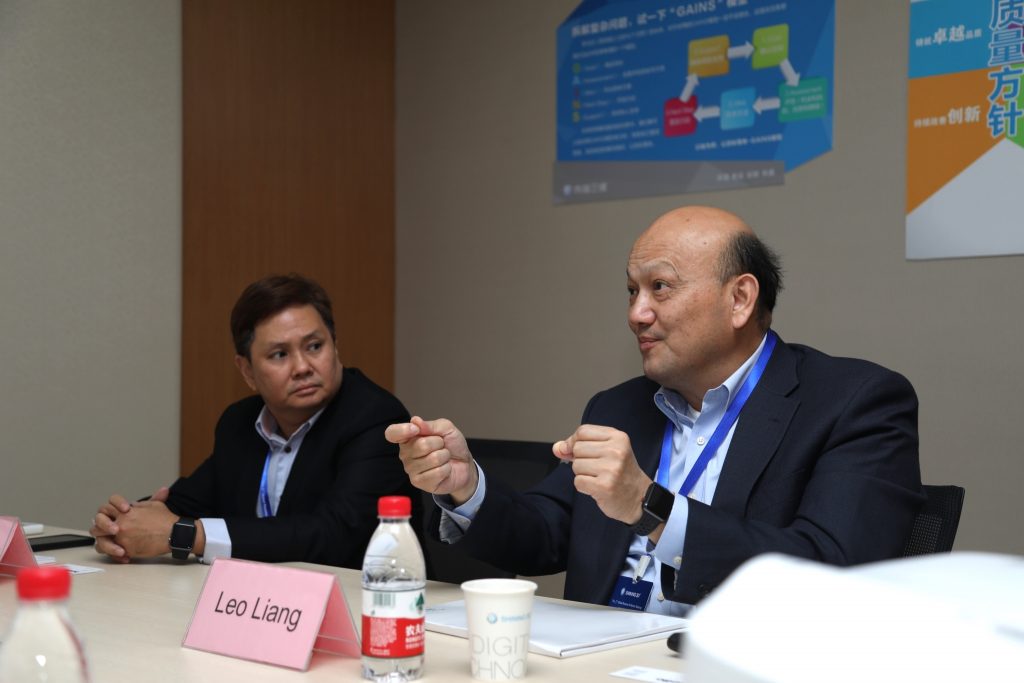
Leo Liang of Siemens PLM Software believes that this cooperation is a win-win choice for both companies. SHINING 3D has a leading position in 3D digitizing and 3D printing market as well as a complete product eco-chain. The partnership between Siemens PLM Software and SHINING 3D can integrate product systems from both sides to better serve more customers. “We hope that customers can quickly realize the value of software and hardware integration and use these new cutting-edge technologies to break with traditional manufacturing processes.”
In the view of SHINING 3D, Siemens PLM Software ranks the first in global industrial software, providing design and manufacturing integrated system solutions for the world’s top industrial enterprises. SHINING 3D hopes to bring such high-end technology to more SMEs and users in the education field, promoting the popularization of a new generation of digital design systems.
Solid Edge SHINING 3D Edition, the result from SHINING 3D and Siemens PLM Software partnership, integrating powerful functionalities of reverse engineering, 3D CAD design, generative design and simulation modules, offers users with a proven solution covering “3D Digitizing- Design & Simulation- Additive Manufacturing ” to generate more high-quality 3D data for production. As an outstanding software, Solid Edge owns significant price-performance ratio and functionality advantages over many other high-end design software, enabling designers to handle engineering changes to keep up with rapidly rising customer demands and maximize the re-use of imported 2D and 3D data.
Constant innovation is the source of inexhaustible power of enterprises
When talking about the secret of 171 years of prosperity for Siemens, Leo Liang says that the market is constantly changing and so is the technology. From electrification to automation, Siemens today leads digitizing and intellectualization. Walking in the forefront all the time requires the company to innovate constantly.
About Siemens PLM Software
Siemens PLM Software, a business unit of the Siemens Digital Factory Division, is a leading global provider of software solutions to drive the digital transformation of industry, creating new opportunities for manufacturers to realize innovation. With headquarters in Plano, Texas, and over 140,000 customers worldwide, Siemens PLM Software works with companies of all sizes to transform the way ideas come to life, the way products are realized, and the way products and assets in operation are used and understood. For more information on Siemens PLM Software products and services, visit www.siemens.com/plm.
About SHINING 3D
SHINING 3D, founded in 2004, rapidly became China’s first listed OTC stock company in the 3D digitizing and 3D printing industries segment. SHINING 3D develops, manufactures and commercializes a wide range of 3D technologies, including 3D scanners for multiple industries and applications, 3D printers for both consumer markets and additive manufacturing, 3D materials, 3D design and manufacturing services, and an online 3D cloud platform. SHINING 3D is well-positioned in the market and has the capacity to handle large sales volumes, offer powerful 3D technologies, and provide strong service support. As the leader among Chinese 3D printing companies, SHINING 3D has currently extended a strong international influence with customers in more than 70 different countries in Asia and Pacific, Europe, North America, South America, Africa and the Middle East.
For more information, please contact us at
Tel: +86 571 82999050
Email: sales@shining3d.com
Shining3D.


